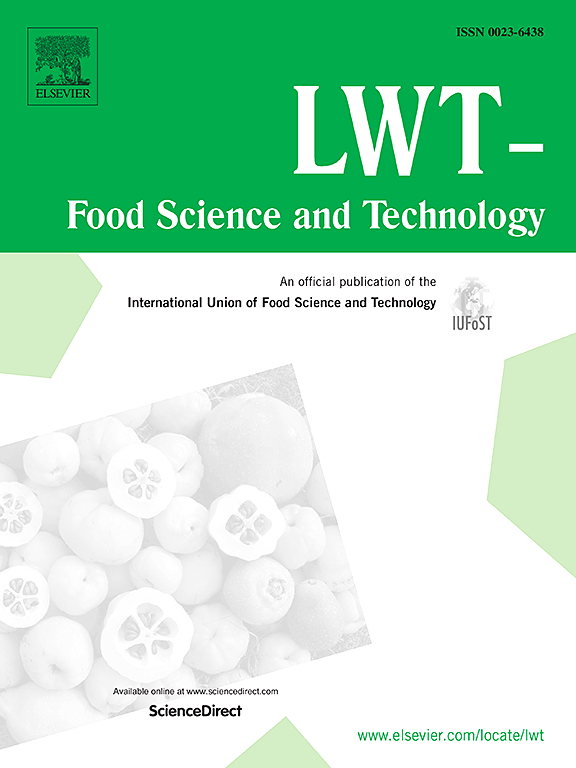Effects of different fermentation methods on the microflora composition and flavor quality of mixed red sour soup
IF 6
1区 农林科学
Q1 FOOD SCIENCE & TECHNOLOGY
引用次数: 0
Abstract
Red sour soup is a traditional fermented food in Guizhou Province, China. In this study, we investigated the effects of two fermentation methods (intensive fermentation of Lentilactobacillus buchneri lt1-6, Pediococcus ethanolidurans lc2-1, and Kazachstania bulderi ym1-3 and natural fermentation) on the flavor quality of mixed red sour soup. Compared with natural fermentation, intensive fermentation could accelerate the decrease of the pH (3.02 ± 0.01) of mixed red sour soup and increase the contents of total acid (1.83 ± 0.03 g/100 g), total sugar (1.82 ± 0.36 mg/mL), and reducing sugar (0.85 ± 0.03 mg/mL), and color difference values (L∗, a∗, b∗). The abundance and diversity of bacteria exceeded those of fungi in mixed red sour soup and 1-heptanol (2.04%), 2-undecanol (0.72%), heptyl formate (2.67%), geranyl isovalerate (0.67%), and the high content of acetic acid (7.71%) detected only in the intensive fermentation group could enhance and improve the flavor quality of red sour soup. The analysis of the correlation between microbial communities and flavor components indicated that bacteria contributed more to the formation of flavour than fungi in mixed red sour soup. Lentilactobacillus, Lactobacillus, Levilactobacillus, and Pichia were closely correlated with flavours (such as acetic acid, 2, 3-butanediol, phenylethanol, and limonene). This study proved the influences of intensive fermentation of lactic acid bacteria and yeast on the quality and flavor of mixed red sour soup and provided new insights into the industrial production of mixed red sour soup with intensive fermentation.
求助全文
约1分钟内获得全文
求助全文
来源期刊

LWT - Food Science and Technology
工程技术-食品科技
CiteScore
11.80
自引率
6.70%
发文量
1724
审稿时长
65 days
期刊介绍:
LWT - Food Science and Technology is an international journal that publishes innovative papers in the fields of food chemistry, biochemistry, microbiology, technology and nutrition. The work described should be innovative either in the approach or in the methods used. The significance of the results either for the science community or for the food industry must also be specified. Contributions written in English are welcomed in the form of review articles, short reviews, research papers, and research notes. Papers featuring animal trials and cell cultures are outside the scope of the journal and will not be considered for publication.
 求助内容:
求助内容: 应助结果提醒方式:
应助结果提醒方式:


